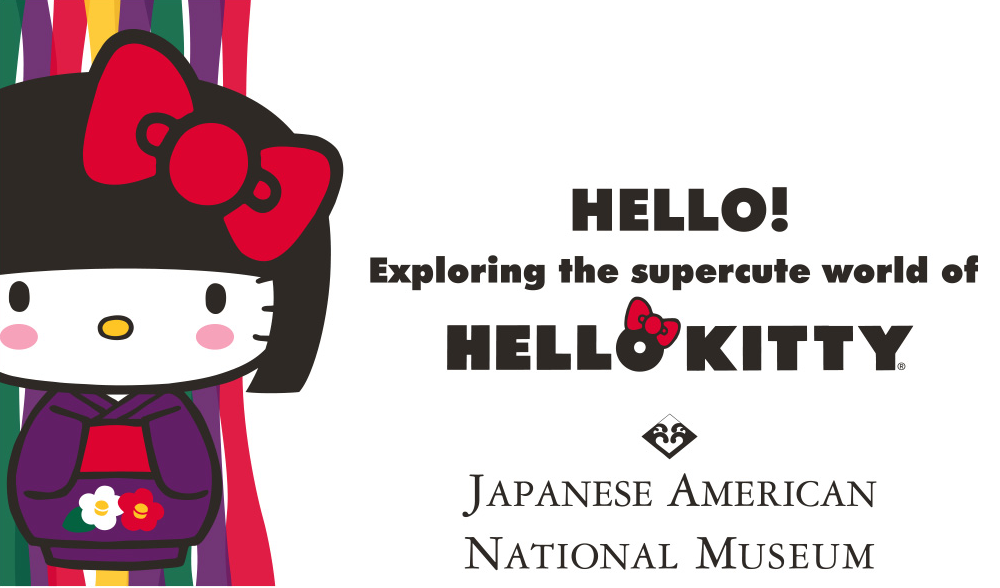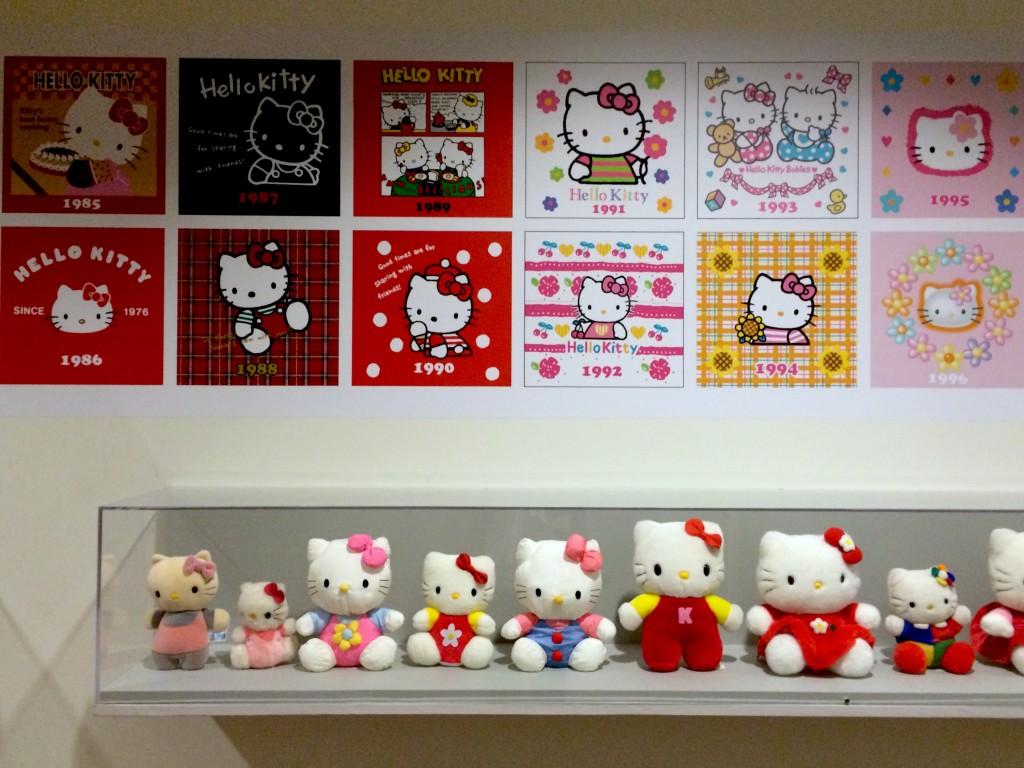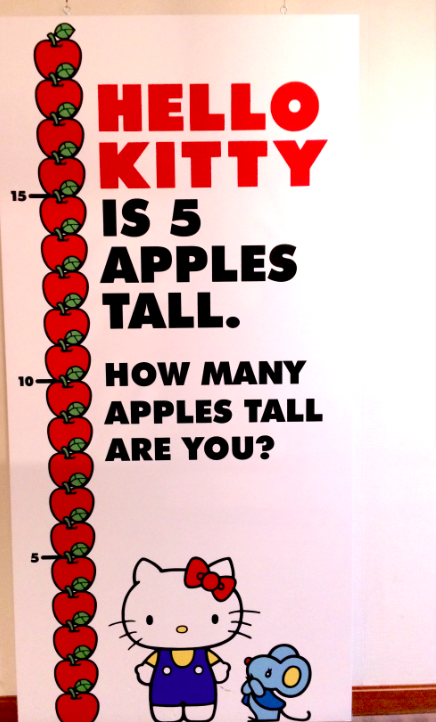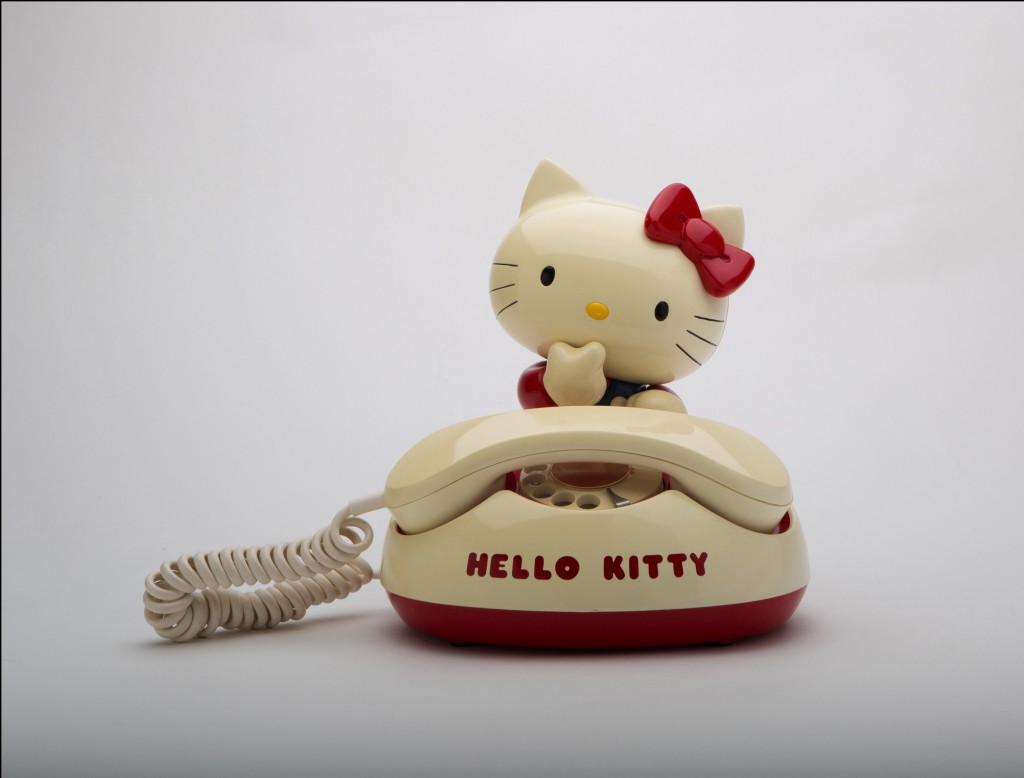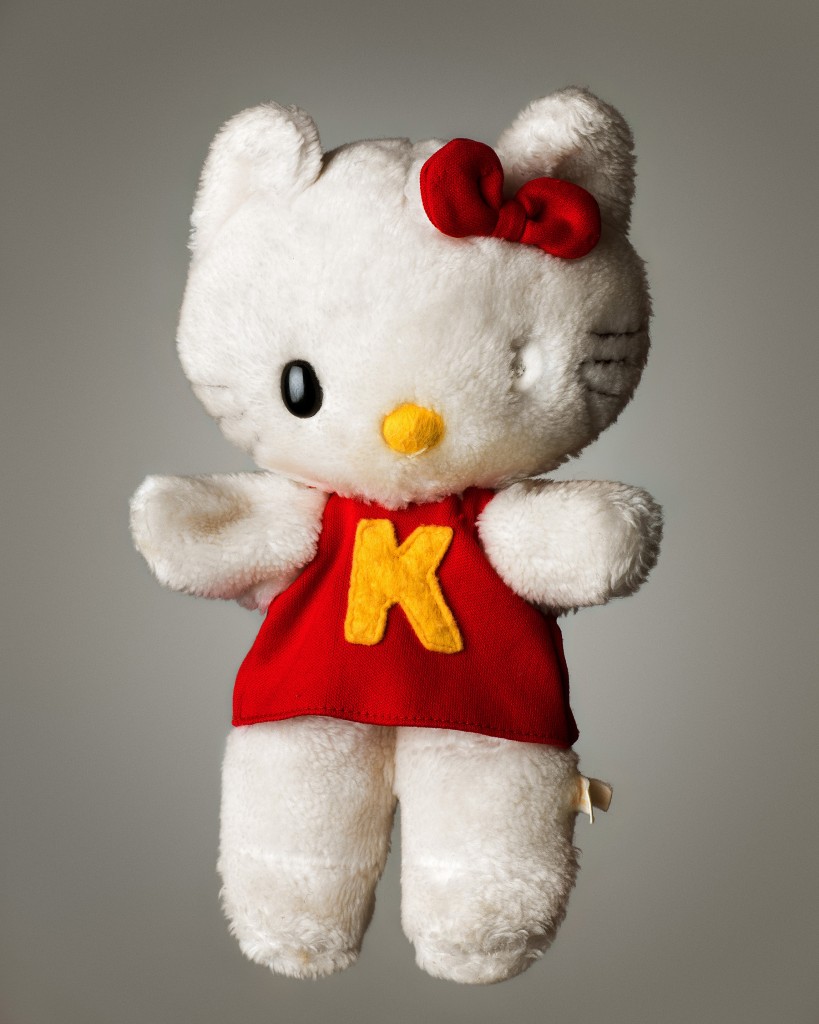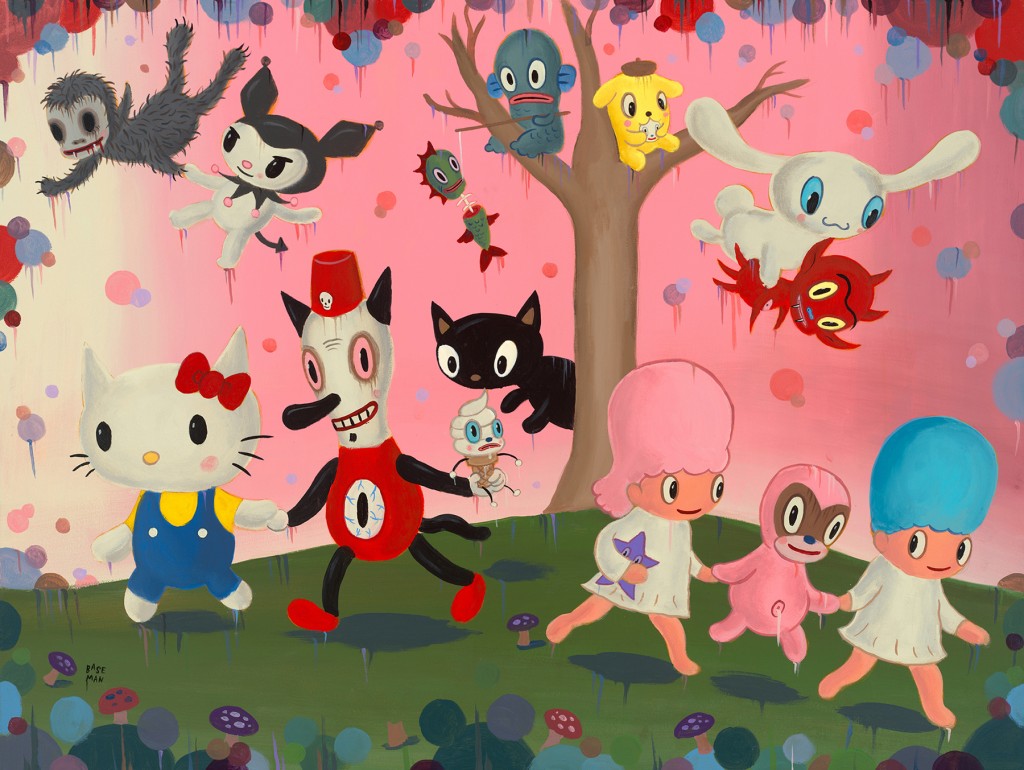Walking into the Hello Kitty exhibit at the Japanese American National Museum, you’ll be immediately overwhelmed by adorable-ness. It’s a rather nice way to be overwhelmed, involving lots of sparkles and smiles. Hundreds of Hello Kitty knick knacks are laid out before your eyes; we found ourselves needing some time to adjust in the first room. For those of you who don’t or didn’t know (us included), Hello Kitty is not just a product, she is full of life. The first room of the exhibit touches on her history as both a story and a product, and lays the foundation for how this figure turned into the movement it is today.
The show runs through April 26, 2015.
Hello Kitty is for everyone. Branded in a way so as to avoid just having one story– or even one specific expression (Hello Kitty is drawn without a mouth in order to leave her emotional state up to interpretation)– she is designed to be exactly what the customer needs her to be. But, at the core of Hello Kitty is friendship and happiness. As the exhibit reminds us, one important kitty-ism that “you can never have too many friends,” rings true. Perusing the myriad of Hello Kitty products and learning about her brings a sort of giddy sense of pleasure, like you really are learning about a new friend. Yes, she’s a product, but she’s also something more.
The exhibit also tells the story of the Sanrio company, founded by Shintaro Tsuji. Sanrio began as Yamanashi Silk Center in 1960, but eventually transitioned to produce value-added products in the form of cute, decorated objects. The exhibit contains hundreds of examples of this: kitchen supplies, school supplies, sewing supplies, and even more items ranging from headphones to bedazzled accessories are made extra-fun with a touch of Hello Kitty pizzazz.
Despite the clear sales-oriented approach of Sanrio, the company’s mission statement seems to involve a level of sincerity and care that can be lacking in large-scale marketing endeavors these days. Tsuji’s “small gift, big smile” ideal exemplifies his and Sanrio’s goal to make simple, accessible products that bring joy to their customers. This, in part, has its origins in the Japanese tradition of giving small souvenirs. Hello Kitty became the perfect souvenir for destinations and monuments both within Japan and in the wider world. She is international: with Japanese roots and a biography that outlines her upbringing in London, Hello Kitty is connected to all cultures. She is the peppy little figure designers, celebrities, artists, and fans look to for happiness and inspiration.
Intertwined with Hello Kitty’s popularity are her pop culture appearances over time. A short video on the first floor of the exhibit shows Hello Kitty clothing, products, and references in television shows like Breaking Bad, The Office, The Big Bang Theory, and America’s Next Top Model. She may have first appeared on a vinyl purse in Japan in 1974, but Hello Kitty’s reach has certainly spanned time and place. She’s a phenomenon!
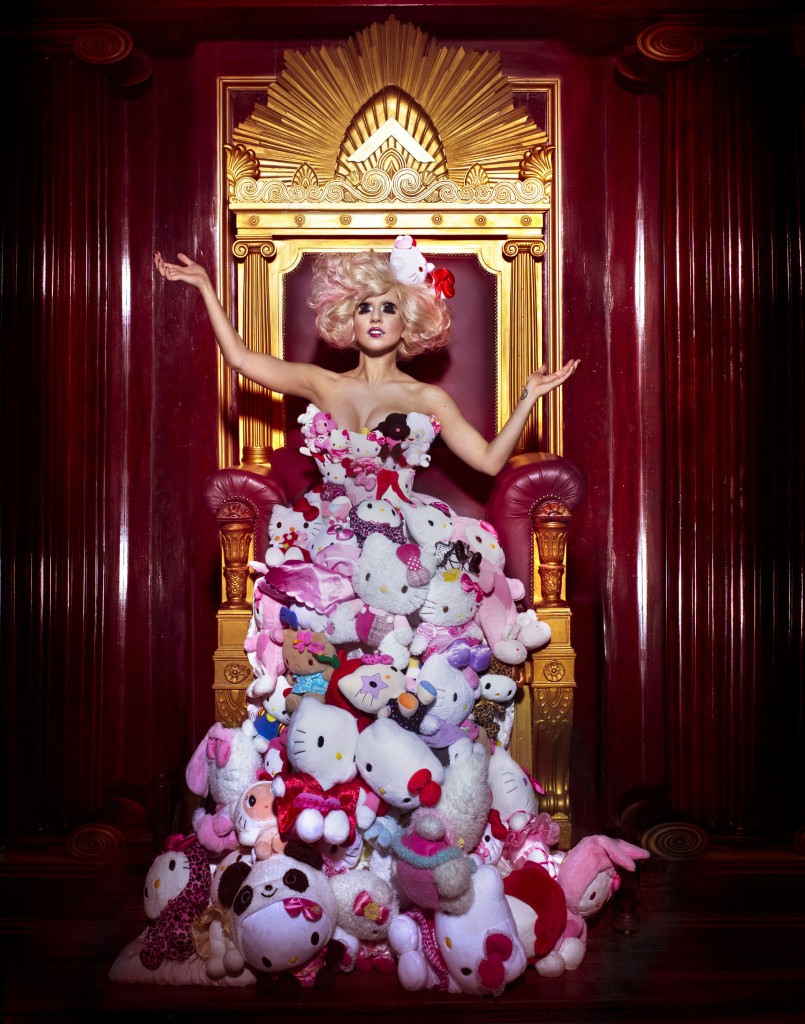
Upstairs is where things get more artsy– literally. Several examples of modern day artists who have incorporated Hello Kitty into their own works are displayed alongside each other, offering a wonderful opportunity for comparison. Help your kids take note of the different mediums used, and explore why this changes the feel of each piece.
Hello! Exploring the Supercute World of Hello Kitty will be at the museum through April 26, so you’ve got time to make your way over there. But do keep it on your list of things to do. It’s a great opportunity to get an inside look at something you may not be as familiar with as you think!

